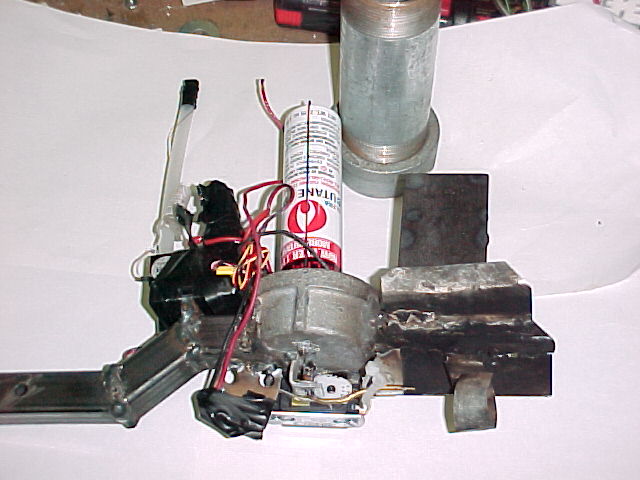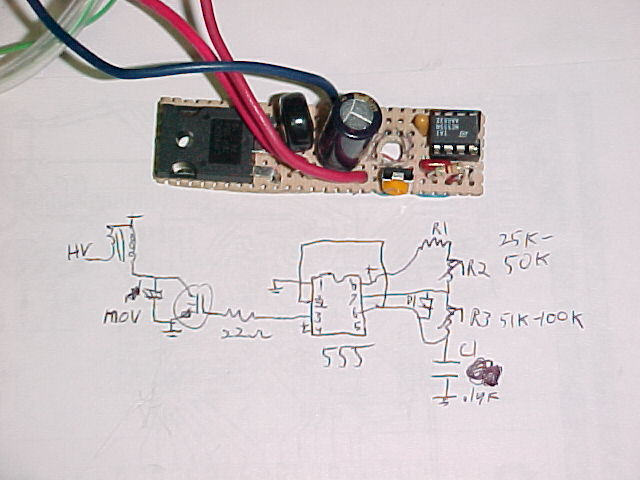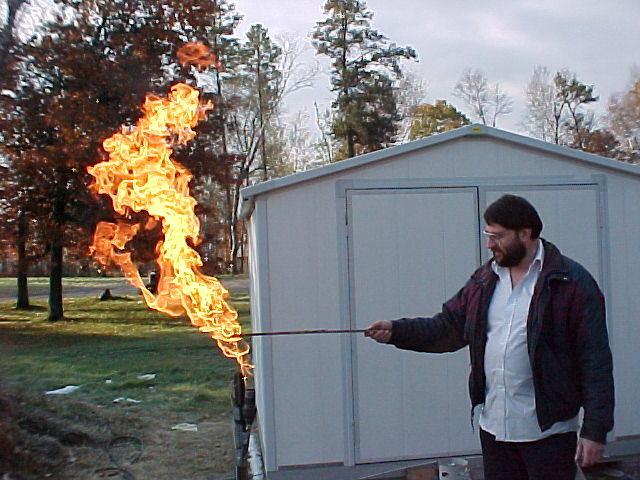Fire is FUN :)
Millipede Flame Thrower
Fun in the yard.
Millipede Flame Thrower
Overview (click for larger view)

The flame thrower uses a butane cylinder mounted in a piece of pipe
for protection.
The receiver (left) activates a servo (bottom) that pulls the wire
that goes up over the top of the cylinder downward. This opens the cylinder's
valve and releases the butane, which then goes threw the brass tubing (bottom
right) to the nozzle.
The servo also presses a switch which turns on the ignition coil (hidden).
The curled piece of metal (bottom right) keeps the flame burning and
a spark gap (hidden) ignites the butane.
The Coil is a motor cycle ignition coil.

This is a standard motorcycle ignition coil. It has one wire and the
other wire is connected to the frame.
A two wire car ignition could would be better, however they are larger
and heavier.
Having the frame connected to the positive terminal was not a problem
in this case since it had it's own battery.
The driver circuit. (click for larger view)

A 555 Timer generates pulses at approximately 60Hz. The off time is
controlled by R2 ( and the on time is controlled by R3
Most coils can be driven around 60 hz with a large 50% duty cycle.
The timer's output is connected via a gate resistor(usally around 30
ohms) to either a IGBT or a FET.
I had this large 1200 Volt 30 amp IGBT laying around so I used it.
The 600 volt mov connected to the IGBT output clamps so that the (IGBT
or fet) does not burn out if the spark gap gets too large.
Fun in the yard.
Fire.. Fire... FIRE... he he he
If all else fails poke it with a stick




